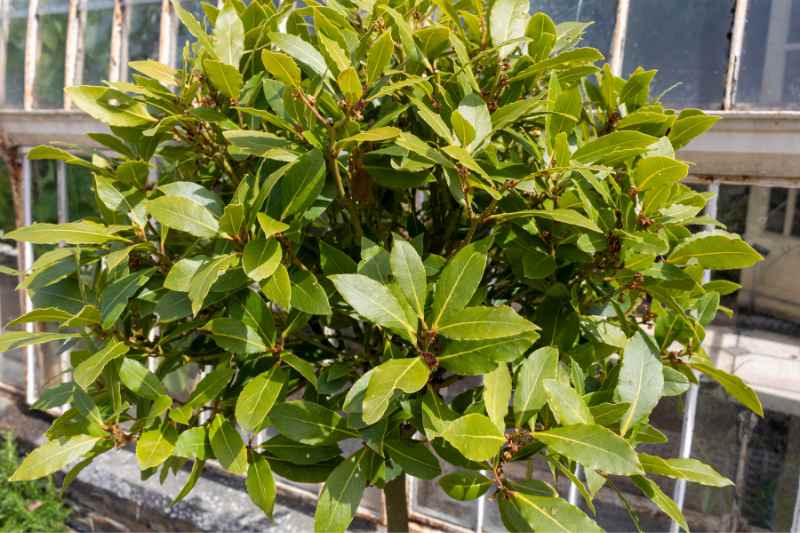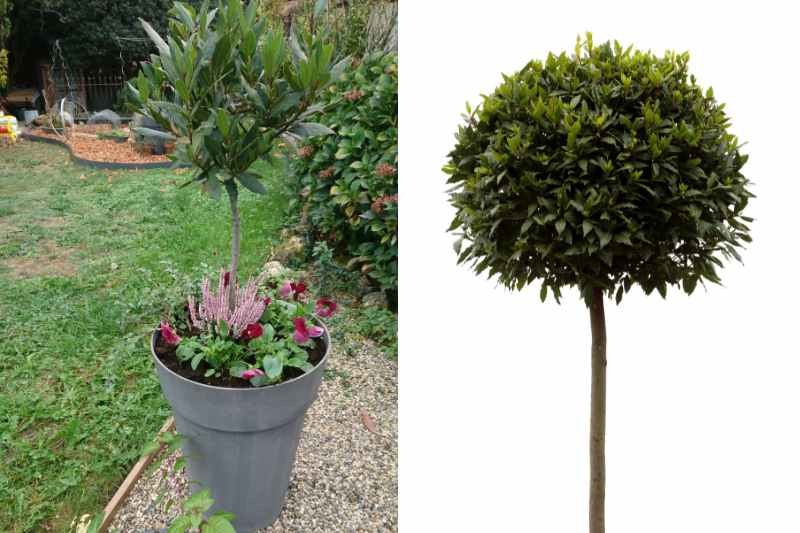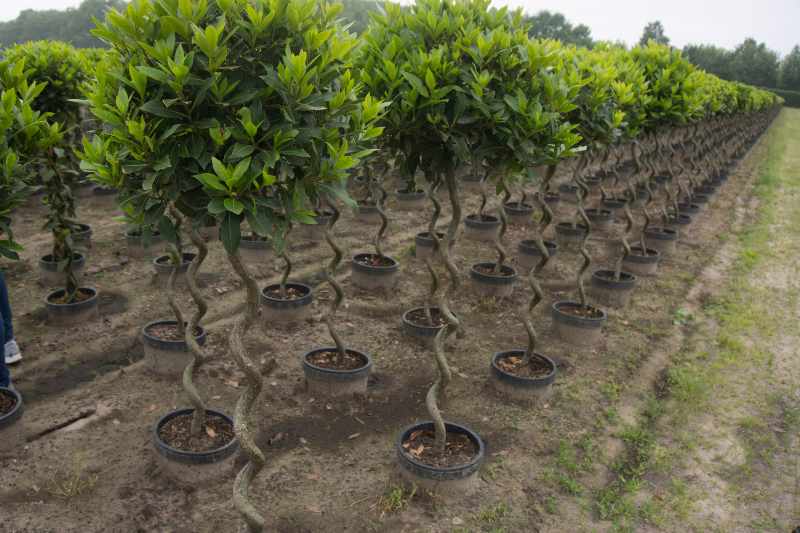The Bay Laurel (Laurus nobilis) is a bush with evergreen foliage, cultivated for its highly aromatic leaves, which are essential in cooking for making bouquet garni or flavouring sauces. It has a naturally conical bushy silhouette, and if left unpruned, it can reach nearly 10 m in height when mature in the ground. This vigorous bush responds very well to pruning. Forming a standard bay laurel has several advantages. This technique allows you to control the plant's growth, give it an aesthetic shape, and facilitate leaf harvesting. As a standard, it will add a graphic touch to the garden or in a pot. Training this bush as a standard can also contribute to its good health by improving air circulation and light penetration. Not complicated, this technique just requires a bit of practice and patience.
Follow our tutorial to learn how to train your bay laurel as a standard and our maintenance tips.

When to form a bay laurel into a tree?
The bay laurel flowers in spring. The formation of the bay laurel as a standard should be done after flowering, around May, and if necessary in autumn, in September-October. This allows the plant to focus on growth without being disturbed by flowering. However, it can withstand 2 to 3 prunings a year if you want to maintain a harmonious shape. In a pot, this type of pruning will help control the height and balance of the bush.

How to form a bay laurel into a tree?
The goal is to remove new shoots and lateral branches to keep only a single main stem that will form the trunk and support the ball of foliage at the top:
- Prune the main stem to about 1 metre in height. The cut should be made just above a bud, using a sharp pruning shear to avoid damaging the plant.
- Then, stake the trunk so that it grows straight; choose a stake taller than the height of this main stem.
- Attach the main stem using soft ties approximately every 15 cm. You will add ties as it grows to support it while it develops. Ensure that the ties are not too tight, as they could damage the stem.
- Using pruning shears, remove all lateral branches up to about 60 cm from the ground. This step helps to form a clear stem and gives your bush an elegant appearance.
- Prune the shoots at the top as soon as they reach about 10 cm long to encourage dense and bushy growth and form a balanced and compact crown. The cuts should be made just above the buds facing outward. This technique encourages the plant to grow outward rather than upward. Keep about ten shoots at the top of the stem, as these will form the crown.
- Regularly remove any suckers that emerge from the stump.
- Monitor the plant's growth and continue to remove unwanted shoots as they appear. When the crown is well formed, you will prune using a boxwood shear.
Your bay laurel standard will be formed in about two years, at which point you can remove the stake and ties.
Don't forget to water and fertilise it regularly, following the specific needs of the bay laurel. For this, consult our article "How to grow bay laurel in the garden" and our complete guide on bay laurel: planting, care, and pruning.

Necessary materials
To successfully form a bay laurel as a standard, you will need the following materials:
- Sharp pruning shears or a boxwood shear
- A stake
- Some ties or staking collars.
Further reading
- Discover our many varieties of bay laurel.
- Bay laurel in 10 questions and answers.
- Learn everything you need to know about bay laurel in our complete guide.
































Comments